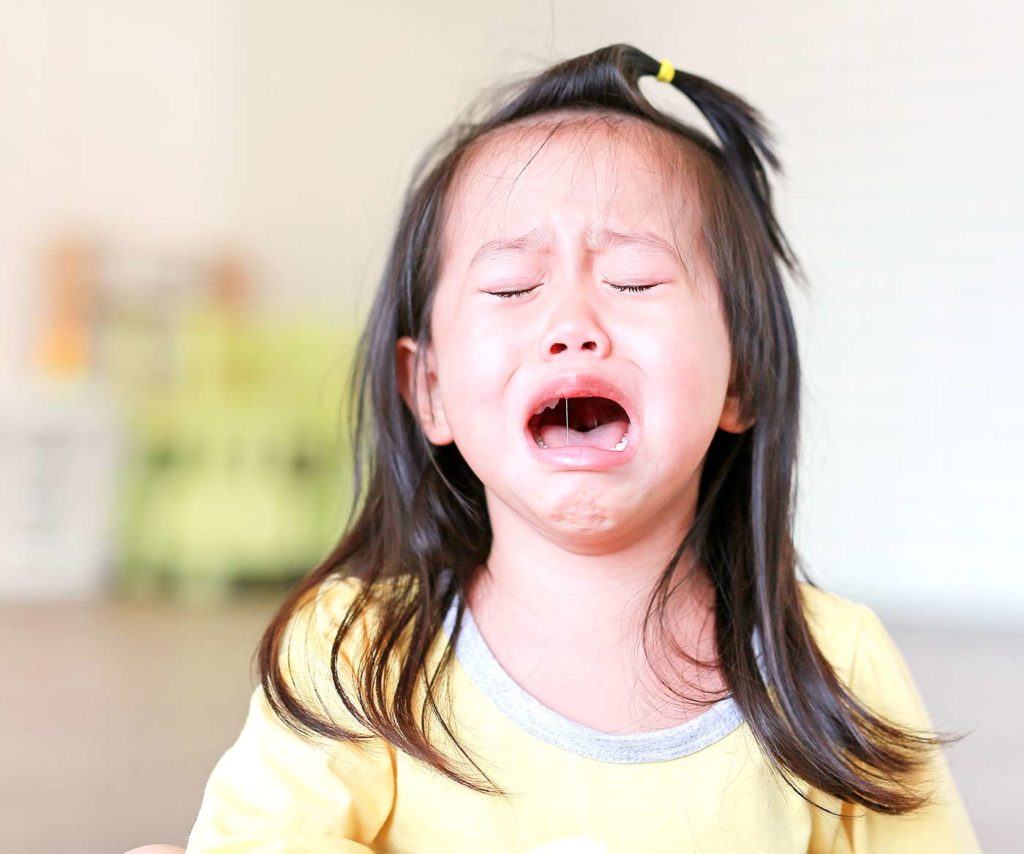Often, when we want to relieve a child’s crying from a fall or tantrum, we use phrases like “don’t cry,” “you have to be brave,” “men don’t cry,” etc.
Have you ever stopped to think about what we have achieved with these phrases ?, we say NO to the behavior and also to the child and his emotions, we teach him to suppress and not express his emotions, this has serious implications for his emotional and emotional development. society as a whole.
- No wonder we educate in this way; we just reproduce the kind of education we get.
- But why can’t we cry when something hurts?Crying is a natural mechanism and should be used if necessary.
If we want our children to experience and understand their emotions, we must exclude certain phrases and habits from our discourse from the day to day, for example, these phrases are the opposite of what we usually use to block thoughts, emotions, and behaviors.
? Let them go, Lucia? Grandma said
? That?
Tears! Sometimes there are so many that seem to drown us, but we’re not.
? Do you think they’ll ever stop?
Of course!? Grandma replied with a sweet smile. Tears don’t last long, they do their job and they continue.
? And what’s your job?
? It’s water, Lucia, washing, cleaning, cleaning?Like rain. You can see everything more clearly after the rain.
? Extract from? Does the rain know why? –
? Fernanda Heredia?
It is necessary to help them identify the causes of their crying and channel their emotions, thus increasing their capacity for self-regulation. Usually what makes us cry is a problem, a disturbance that takes away our peace of mind.
Fortunately, nature is wise and has fought this current educational model, making sadness the most empathetic emotion. Our minds and brains have a special predisposition to respond to sadness, to sympathize with it, and to try to comfort those who suffer.
The problem is that all these years of an incorrect educational model make us suppress negative but healthy emotions, we want to show ourselves and others that we are calm and at peace.
We need to teach children that sadness can have many causes, that it is a natural response to something that bothers us and can be channeled in a healthy way; Propose appropriate models of self-regulation and promote the ability to think about everything that brings us this discomfort.
Instead of denying, “Not being able to play is not the end of the world,” he accepts, “I understand that you want to leave and that you’re sad. “
When we say “don’t cry,” we teach the child a system based on fear and denial of the message that tears offer. Sadness is an unpleasant and negative emotion, but a healthy one.
In addition to teaching them to understand sadness, we have an obligation to help them alleviate that pain and get out of this vicious cycle. Perhaps the reason for crying is somewhat irritating and banal and that is why we must be firm: do not allow tantrums.
It should be noted that tantrums in children from 2 to 6 years old are very common and, above all, very important, show us what the needs and strengths of the child are, taking into account their stage of development.
In these cases, we often don’t know how to act, but it is critical and important that our words correctly convey our message: “yes” to feelings and for the child and “no” to misconduct. We need to evaluate the child’s emotions and feelings based on their level of understanding and facilitate introspection.
We know that emotions do not occur in isolation, our emotional world is very complex. For example, we must teach them little by little that we may be sad and, at the same time, irritated or embarrassed, in this way they will learn as they mature and flex their thoughts.
In conclusion, we can say that no matter the source of the tears, the important thing is that the child understands what is going on and is able to say what the origin of his discomfort is, this will help him to self-correct and think of a time when his thoughts seem very confusing and do not respond correctly.
Illustrations by Karin Taylor

